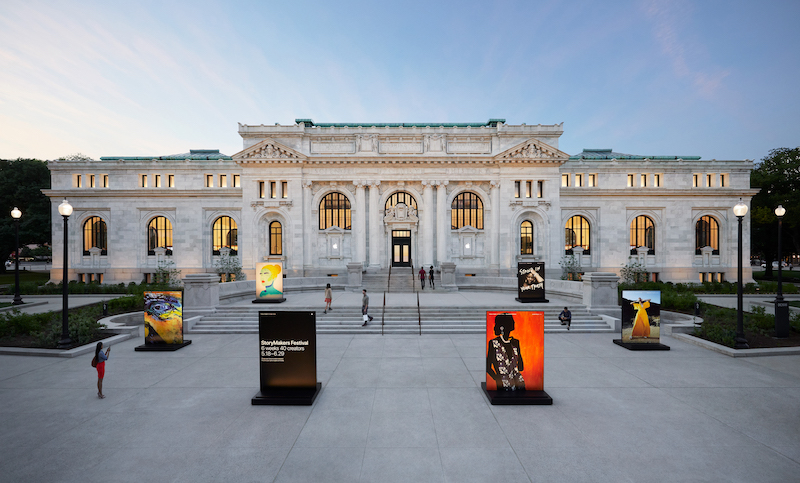Some may view the conversion of a historic Washington, D.C. library into an Apple store as a sign of the end of times; exchanging knowledge for shiny new Apple products. But in reality, it isn’t quite that bad.
The Carnegie Library, originally funded by Andrew Carnegie and first opened in 1903, was Washington, D.C.’s first public library (and the city’s first desegregated public building) and remained in service until 1970. Soon after, the Beaux-Arts style building fell into a period of neglect until Foster + Partners, Beyer Blinder Belle, and Apple decided to restore the building to its previous luster.
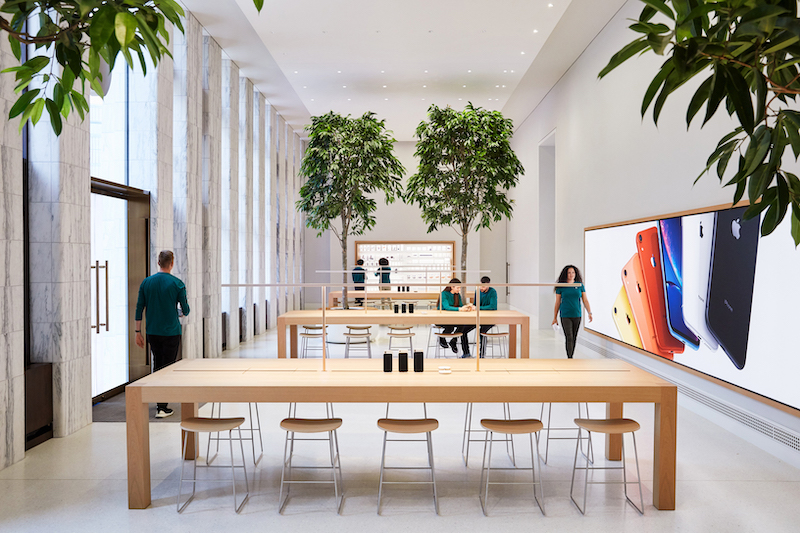
The two companies worked with conservation experts to preserve the historic facades, return the interior spaces to their original footprints, and restore distinctive early 20th century detailing. An urban route through the building was created with entrances on both sides of the north-south axis. The original, southern entrance to the building is fronted by a grand public plaza that will host public concerts and events.
See Also: 18 Carbon fiber wings grace Foster + Partners-designed Apple Dubai Mall terrace
Inside, the building’s heart has been transformed into a double-height space that is capped with a new skylight to bring light deep into the interior spaces. This is where the Forum forms the creative hub of the building; a place where experts from various fields will host free talks, performances, and workshops for the public, viewable from two levels.
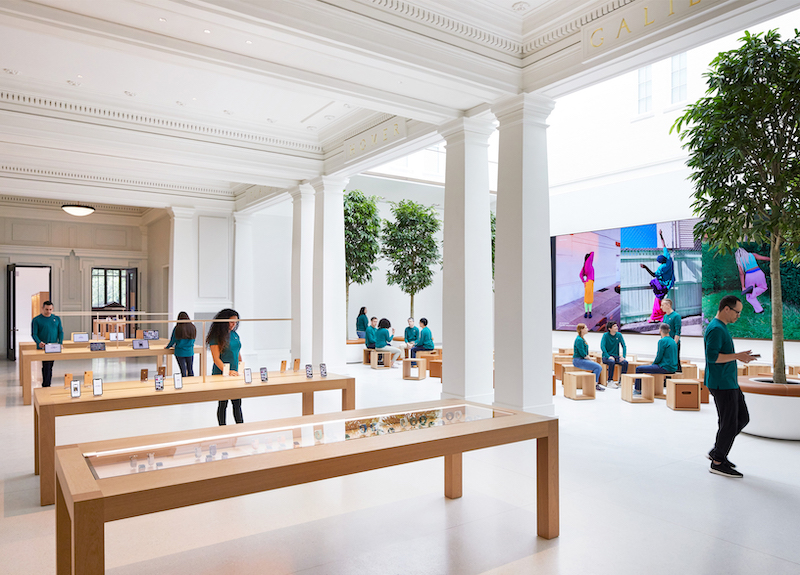
A grand staircase leads up to the DC History Center on the second floor, and down to the Carnegie Gallery, which displays historic photographs and documents about the origins and history of the building, in the basement. The upper levels of the building will continue to be occupied by the Historical Society of Washington, D.C.
The palette of materials used was chosen to suit the historic surroundings and was inspired by the unique early 20th century detailing of the building. “The materiality and detailing of the historic facades and interior spaces have been carefully preserved, working closely with the Nation Trust for Historic Preservation and other conservation experts,” said Stefan Behling, head of Studio, Foster + Partners, in a release.
Apple Carnegie Library opened on Saturday, May 11. For the following six weeks, a StoryMaker festival will bring 40 artists, poets, activists, musicians, photographers, filmmakers, lawmakers, and community builders to tell their stories inside the renovated building.
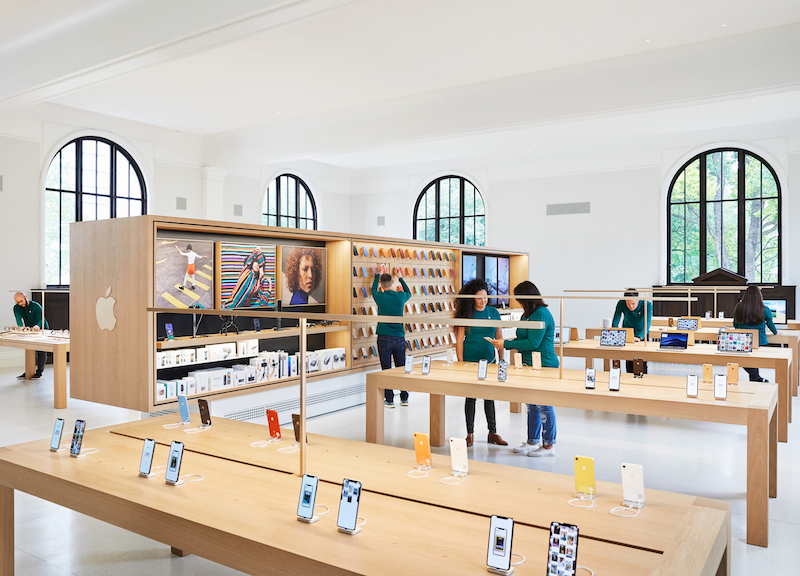
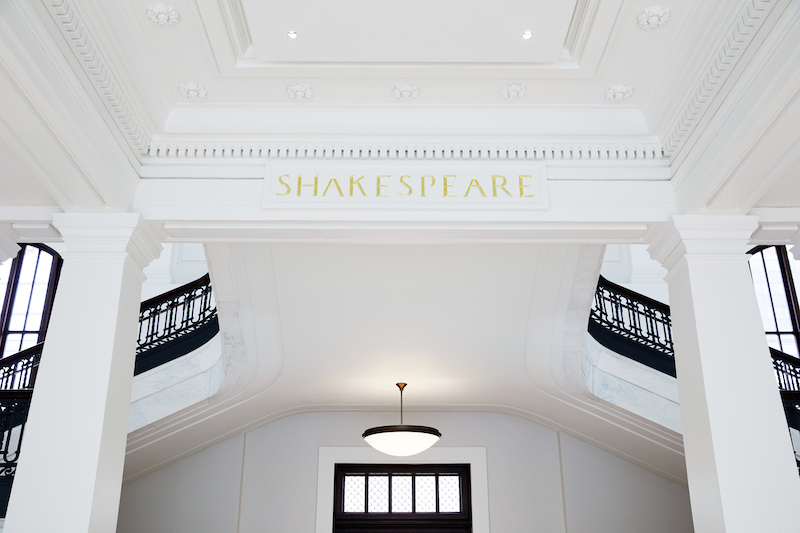
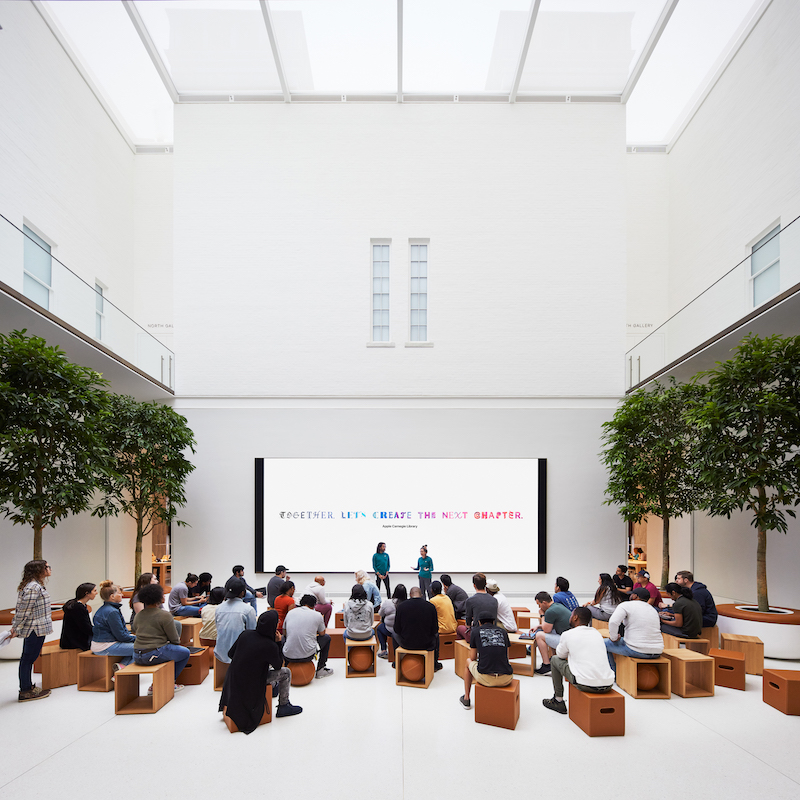
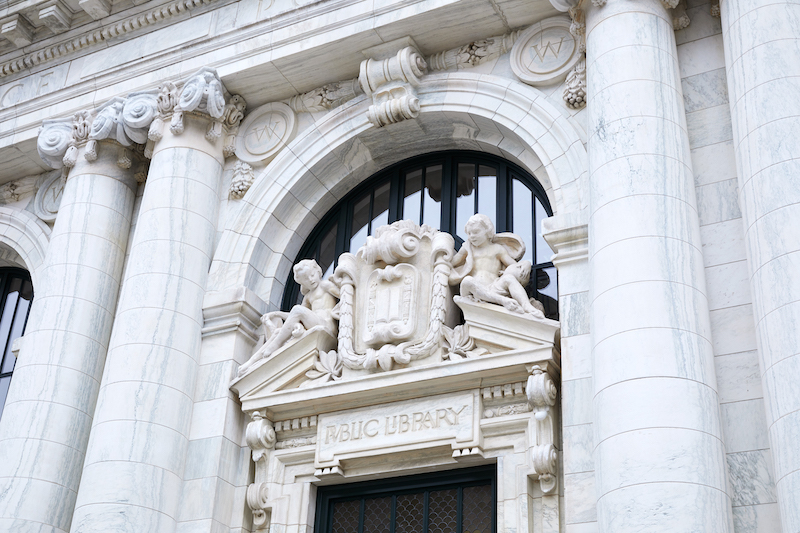
Related Stories
Urban Planning | Jul 26, 2023
America’s first 100% electric city shows the potential of government-industry alignment
Ithaca has turned heads with the start of its latest venture: Fully decarbonize and electrify the city by 2030.
Multifamily Housing | Jul 25, 2023
San Francisco seeks proposals for adaptive reuse of underutilized downtown office buildings
The City of San Francisco released a Request For Interest to identify office building conversions that city officials could help expedite with zoning changes, regulatory measures, and financial incentives.
Sustainability | Jul 13, 2023
Deep green retrofits: Updating old buildings to new sustainability standards
HOK’s David Weatherhead and Atenor’s Eoin Conroy discuss the challenges and opportunities of refurbishing old buildings to meet modern-day sustainability standards.
Multifamily Housing | Jul 11, 2023
Converting downtown office into multifamily residential: Let’s stop and think about this
Is the office-to-residential conversion really what’s best for our downtowns from a cultural, urban, economic perspective? Or is this silver bullet really a poison pill?
Adaptive Reuse | Jul 10, 2023
California updates building code for adaptive reuse of office, retail structures for housing
The California Building Standards Commission recently voted to make it easier to convert commercial properties to residential use. The commission adopted provisions of the International Existing Building Code (IEBC) that allow developers more flexibility for adaptive reuse of retail and office structures.
Office Buildings | Jun 28, 2023
When office-to-residential conversion works
The cost and design challenges involved with office-to-residential conversions can be daunting; designers need to devise creative uses to fully utilize the space.
Resiliency | Jun 14, 2023
HUD offers $4.8 billion in funding for green and resilient building retrofit projects
The Department of Housing and Urban Development (HUD) recently released guidelines for its Green and Resilient Retrofit Program (GRRP) that has $4.8 billion for funding green projects.
Energy-Efficient Design | Jun 5, 2023
Implementing an ‘asset drawdown strategy’ for site decarbonization
Solidifying a decarbonization plan via an “asset drawdown strategy” that carefully considers both capital and operating costs represents a game-changing opportunity for existing properties to compete with new projects.
K-12 Schools | Jun 5, 2023
How to achieve cost-effective kindergarten classrooms
Educational architect Robin Randall shares realistic advice about the challenges of adding developmentally appropriate, play-based kindergarten classrooms while respecting budget limitations.
Reconstruction & Renovation | May 26, 2023
Boulder, Colo., puts sustainable deconstruction policy into action
Three quarters of a closed hospital’s building materials and equipment are being reused for new construction, or resold.


